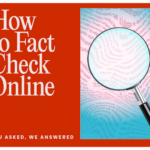Katie Spies
Founder + CEO of Maev
-
You Asked We Answered

Bone appétit! 🦴 We can all agree that our dogs deserve the best, especially when it comes to what they eat. Founder and CEO Katie Spies (she/her) couldn’t agree more, which is why she created Maev—the world’s first human-grade raw dog food. Along with wanting better for doggos everywhere, Katie says there was another reason for starting the company: her own good boy George. “A few months after I adopted George, he started having seizures. I struggled endlessly to find a solution that worked—from medications to elimination diets and environmental changes. Eventually, the vet recommended changing his diet. Once I switched to raw food, the seizures stopped and I watched his health issues resolve along with an improvement in his digestion, energy balance, and behavior.” Thus, Maev was born. And unlike other pet foods, their simple ingredients are actually visible to the naked eye. Since quality control is a lot easier when the beef looks like beef, ya know?
Here, Katie shares her expertise on doggy wellness, which ingredients do what, and what’s next for the beloved brand.
What do you think is needed for a dog’s diet?
In our experience, the best possible thing that your dog can eat is a raw diet. Raw diets are high in protein, low in carbs, have no fillers or artificial ingredients, and are completely unprocessed. That’s so universally different from what’s on the shelf today. Most dogs in the U.S. eat kibble, and even if you’re feeding a high-end, premium kibble, it’s still kibble: ultra-processed at high temperatures and pressures. That processing degrades the nutrient availability and makes it harder for your dog’s metabolism to reap the benefits of any remaining nutrition that’s left.
Kibble is also extruded, like a batter. That manufacturing process requires the batter to contain a lot of starches and fillers to bind everything together. Most kibbles are high enough in carbohydrates that they unnaturally shift the pH of your dog’s stomach, detrimentally affecting gut flora, metabolism, immunity, and more. Studies have linked unprocessed diets to better health outcomes too, so it’s not just us.
What ingredients do you like to use, and what do they do?
From the macro-ingredients in our Raw Food blends to the micro-ingredients in our Supplement Bars, each ingredient is backed by research in an aim to support their overall health and wellbeing. A few ingredients we utilize are chia seeds (providing nine essential amino acids needed for dogs), bovine colostrum (key for gut health, immunity, and mood support), and fish oil (a star antioxidant).
Is there anything we should absolutely avoid in our dog’s diet?
If you have to feed a dry kibble, we recommend hydrating it with bone broth, goats milk, or water to ensure that your dog is getting enough moisture content. Dogs and cats, unlike humans, get the majority of their daily water intake from their food, not from drinking it. Feeding dry foods has been linked to chronic dehydration, which is a precursor to many of the other common ailments in our pets as they age.
If you’re sticking with kibble, we’d also focus on the ingredient list. Avoid any kibble where the first ingredient isn’t a protein, and avoid products with “meals” or “byproducts” listed in their ingredient lists, as those are tell-tale signs of low quality. Generally, we know that nutrition is complex and opaque, and the aisle is designed to make it less and less transparent for dog owners to know what’s in their dog’s bowl. Follow your instinct, pay attention to ingredient lists, and if you can, add unprocessed foods to their diet, either as a full meal or even as a topper. If you’re going full raw, we recommend picking a complete and balanced diet.
What’s your advice for a great dog wellness routine?
You know your dog best. All of their quirks, likes and dislikes, things that make them happy or frustrated, activities that seem to calm them, versus those that lead to anxiety or stress. If you have a dog that has a specific preference—whether genetic or learned—make sure you find ways to foster it and give them an opportunity to fulfill that need.
Pay attention to what your dog loves and what seems to lead to happiness or contentment: some dogs need a job, some need a chase, others need mental stimulation, and some, like mine, need to be your shadow and their “job” is to be your companion. Personally, I have one velcro dog and one chasing dog. We make it a habit to do daily walks, regular park trips where they can be off-leash and chase squirrels, and have a very firm routine involving lots of couch and desk time with George on my lap.
And lastly, would you ever venture into the world of cat wellness?
This is such an exciting topic and something my team and I are constantly considering! While nothing is confirmed at this time, it’s something we definitely plan to explore in the future. As controversial as it sounds, and please don’t tell our dogs, we love cats.



